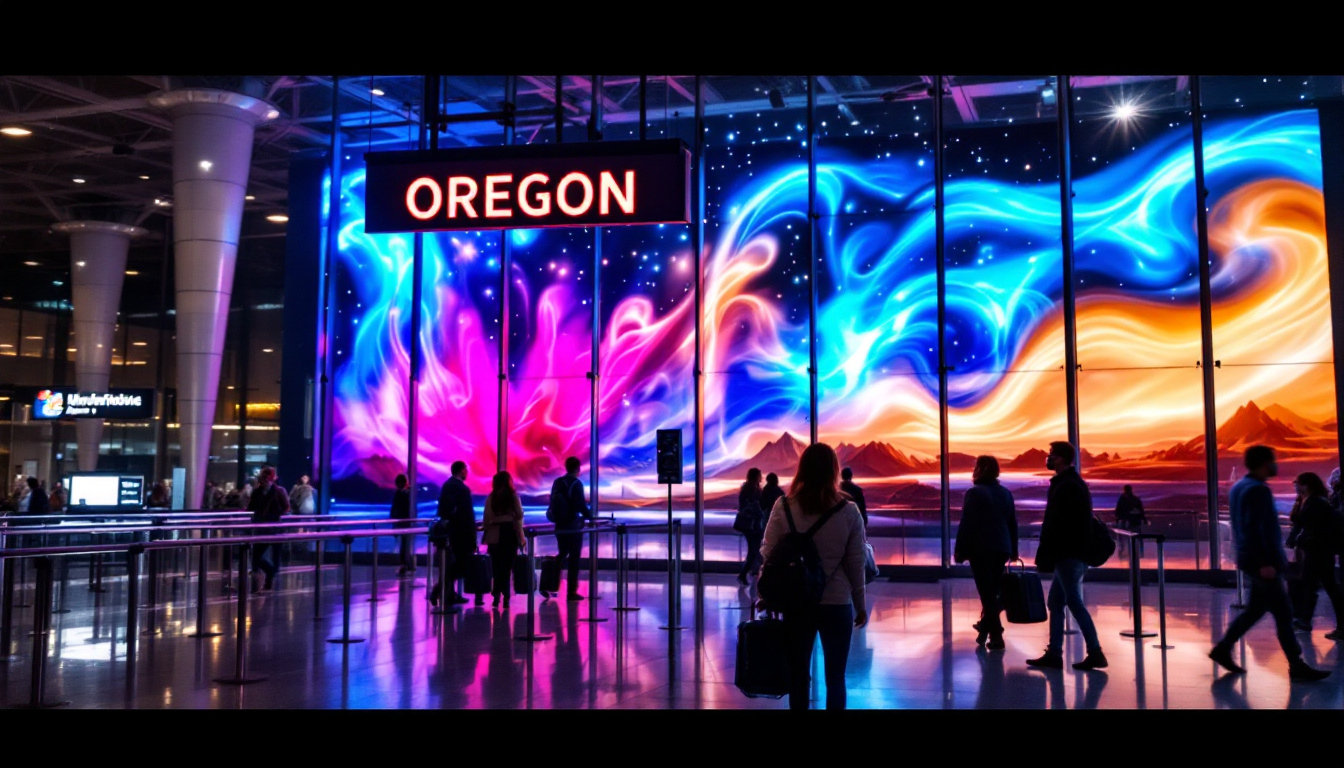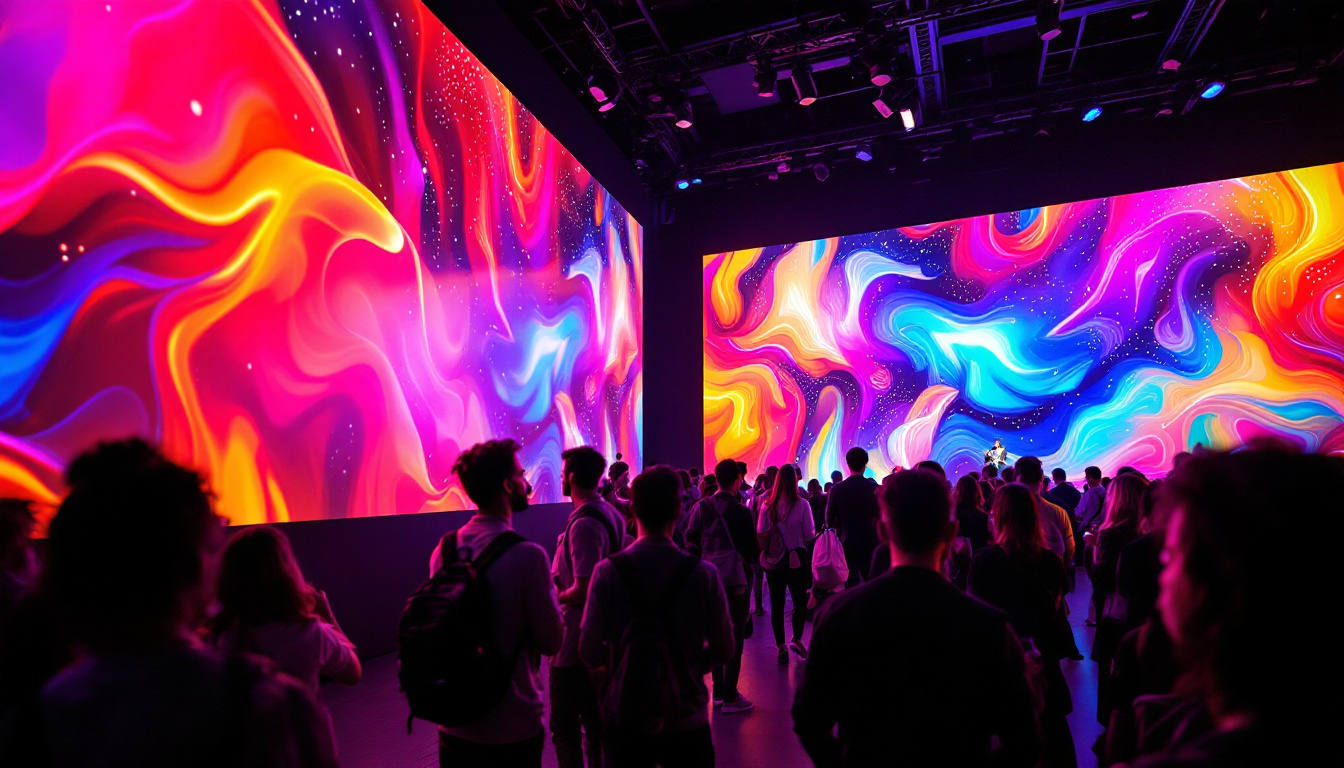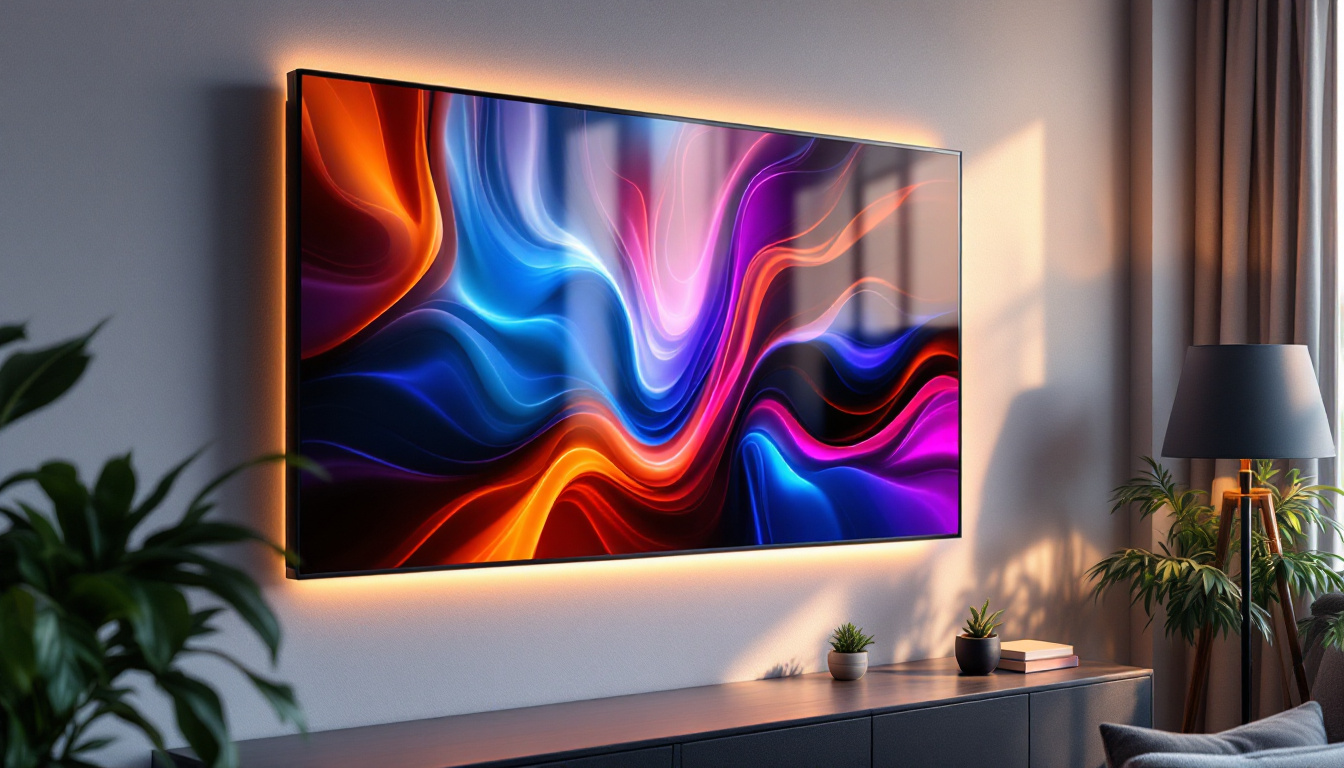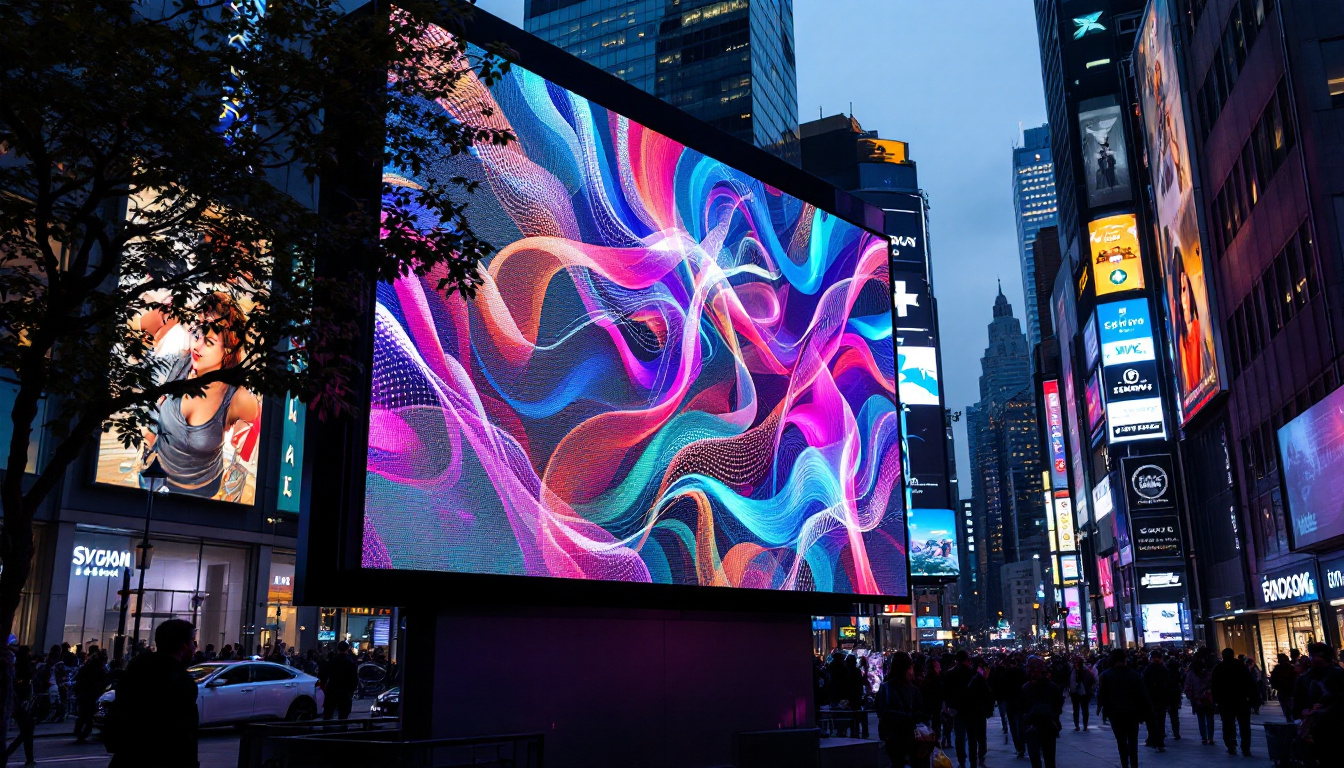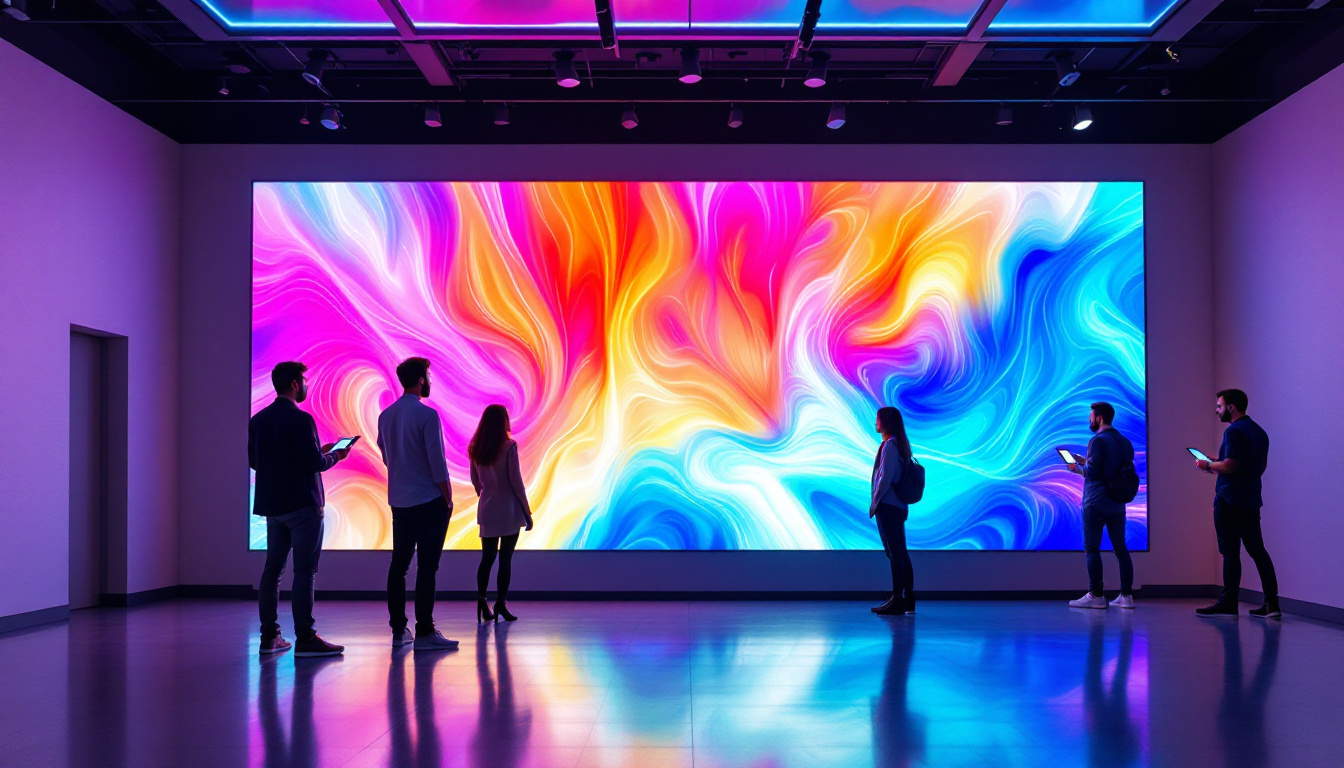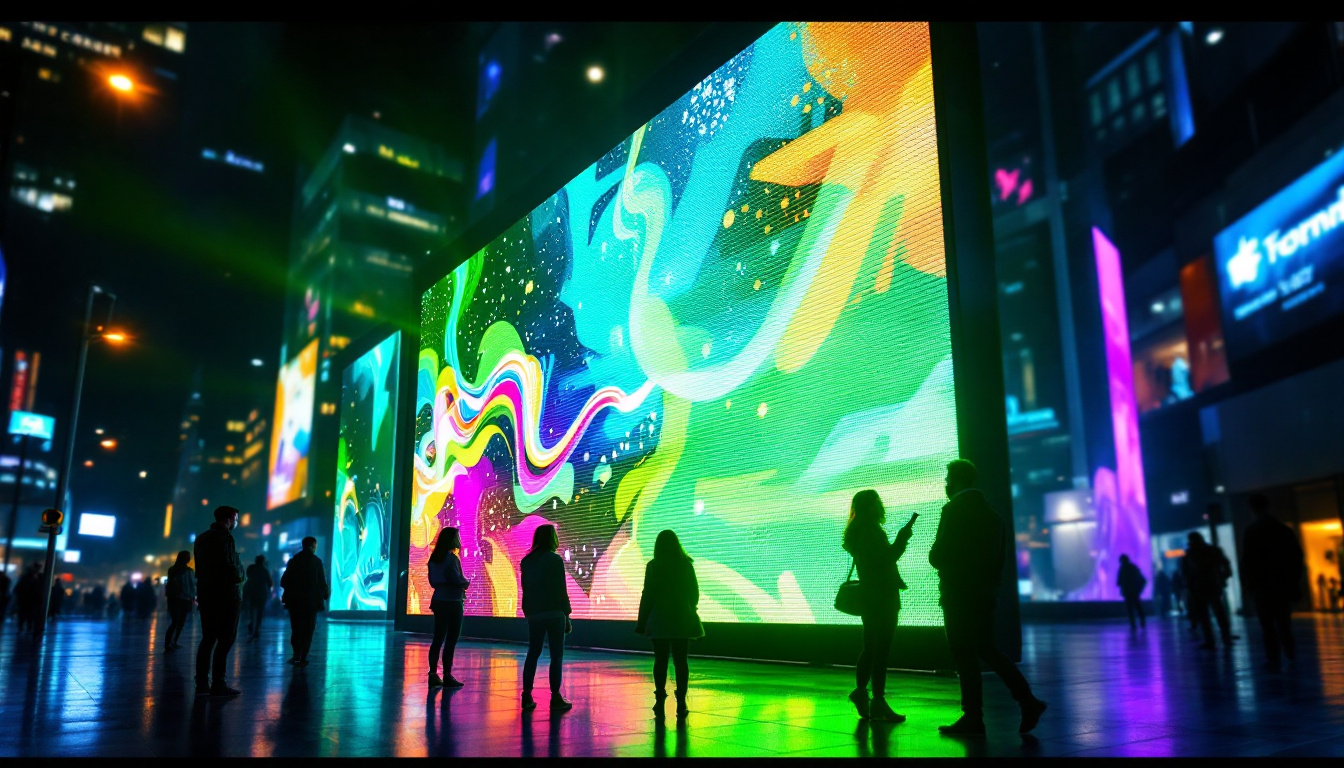Oregon International Airport (OIA) stands as a vital hub for travelers, connecting the Pacific Northwest to various destinations across the globe. With its commitment to providing a seamless travel experience, OIA has embraced modern technology, particularly in the form of LED displays. These displays play a crucial role in enhancing communication, providing information, and improving the overall passenger experience. This article delves into the various aspects of LED displays at Oregon International Airport, exploring their benefits, functionalities, and the technology behind them.
The Importance of LED Displays in Airports
In the fast-paced environment of an airport, clear and timely communication is essential. LED displays serve as a primary medium for conveying important information to passengers. From flight schedules to safety announcements, these displays ensure that travelers are informed and can navigate the airport efficiently.
Enhancing Passenger Experience
LED displays significantly enhance the passenger experience by providing real-time information. Travelers can easily check flight statuses, gate changes, and boarding times without needing to rely on announcements or printed materials. This immediacy helps reduce anxiety and confusion, allowing passengers to plan their movements within the airport more effectively.
Moreover, the vibrant colors and high-resolution graphics of LED displays capture attention more effectively than traditional signage. This visual appeal not only conveys information but also contributes to a more engaging atmosphere within the airport, making the travel experience more pleasant. Additionally, many airports have begun to incorporate interactive LED displays that allow passengers to access maps, find amenities, and even explore local attractions, further enriching their journey.
Efficiency and Cost-Effectiveness
From an operational standpoint, LED displays offer significant efficiency and cost-effectiveness. Unlike traditional LCD screens or printed signs, LED technology requires less maintenance and has a longer lifespan. This durability translates to lower replacement costs and reduced downtime, ensuring that information is consistently available to passengers.
Additionally, the energy efficiency of LED displays contributes to the airport’s sustainability goals. By consuming less power than older technologies, these displays help reduce the airport’s overall carbon footprint, aligning with broader environmental initiatives. Furthermore, airports can leverage smart technology to optimize the use of LED displays, adjusting brightness based on ambient light conditions or displaying targeted advertisements that can generate additional revenue streams while providing relevant information to travelers.
Types of LED Displays at Oregon International Airport
Oregon International Airport utilizes various types of LED displays to cater to the diverse needs of its passengers and operations. Each type serves a specific purpose, contributing to the overall functionality of the airport.
Flight Information Displays
Flight Information Displays (FIDs) are perhaps the most recognizable type of LED display at any airport. At OIA, these screens provide real-time updates on flight arrivals, departures, delays, and gate information. The dynamic nature of FIDs allows for instant updates, ensuring that passengers have the most current information at their fingertips.
The layout of these displays is designed for quick readability, featuring large fonts and contrasting colors that are easy to see from a distance. This design consideration is crucial, especially in busy terminals where passengers may be rushing to catch their flights. Additionally, FIDs are often equipped with multilingual support, catering to the diverse international traveler demographic that frequents the airport, thus enhancing accessibility and ensuring that all passengers can navigate their journeys with confidence.
Wayfinding Displays
Wayfinding displays are another essential component of Oregon International Airport’s LED technology. These screens guide passengers through the airport, helping them locate amenities such as restrooms, restaurants, and lounges. By providing interactive maps and directional information, wayfinding displays reduce the likelihood of passengers getting lost or confused.
Incorporating touch-screen technology, some wayfinding displays allow travelers to input their desired destination and receive step-by-step directions. This feature enhances user experience by making navigation intuitive and straightforward. Moreover, these displays often highlight points of interest, such as art installations or local shops, encouraging passengers to explore the airport and engage with its offerings while they wait for their flights. This not only improves the overall airport experience but also promotes local culture and businesses.
Advertising Displays
In addition to functional displays, Oregon International Airport also utilizes LED technology for advertising purposes. These displays showcase advertisements from local businesses, airlines, and services, providing a revenue stream for the airport while also informing passengers about available options.
The strategic placement of advertising displays in high-traffic areas ensures maximum visibility. Advertisers benefit from the dynamic nature of LED technology, allowing them to change content frequently and target specific audiences effectively. Furthermore, these displays can feature interactive elements, such as QR codes that passengers can scan for promotions or additional information, creating a more engaging advertising experience. This innovative approach not only enhances the visibility of advertisers but also enriches the passenger experience by connecting them with relevant services and products that may enhance their travel journey.
The Technology Behind LED Displays
The effectiveness of LED displays at Oregon International Airport can be attributed to the advanced technology that powers them. Understanding this technology helps appreciate the benefits that LED displays bring to the airport environment.
Light Emitting Diodes (LEDs)
At the core of LED displays are Light Emitting Diodes (LEDs). These semiconductor devices emit light when an electric current passes through them. The efficiency of LEDs allows for bright, vivid displays that can be easily seen in various lighting conditions, making them ideal for the bustling environment of an airport.
LEDs also come in various colors, enabling the creation of full-color displays. This versatility allows for dynamic content, including animations and videos, which can enhance the visual appeal of the information being presented. Furthermore, the longevity of LED technology means that these displays can operate for tens of thousands of hours without significant degradation, reducing the need for frequent replacements and contributing to sustainability efforts by minimizing waste.
Control Systems
The control systems behind LED displays are equally important. These systems manage the content displayed on the screens, ensuring that information is updated in real-time. Advanced software solutions allow airport staff to monitor and control multiple displays from a centralized location, streamlining operations and ensuring consistency across the airport.
Moreover, these control systems can integrate with other airport management systems, such as flight tracking and security systems. This integration ensures that all information is synchronized, providing passengers with accurate and timely updates. Additionally, the ability to customize content based on specific needs—such as emergency announcements or promotional displays—enhances the overall passenger experience, making it more informative and engaging.
Installation and Maintenance
The installation of LED displays at Oregon International Airport involves careful planning and execution. Factors such as location, visibility, and accessibility are considered to maximize the effectiveness of each display. Professional installation ensures that the displays are securely mounted and properly connected to power and data sources.
Maintenance is also a critical aspect of keeping LED displays operational. Regular checks and servicing help identify potential issues before they become significant problems. This proactive approach minimizes downtime and ensures that passengers always have access to the information they need. In addition, the use of remote monitoring tools allows technicians to diagnose issues from afar, significantly reducing response times and enhancing the reliability of the displays. This level of attention to detail ensures that the airport maintains its commitment to providing a seamless travel experience for all passengers.
Future Trends in LED Technology at Airports
As technology continues to evolve, the future of LED displays at Oregon International Airport looks promising. Innovations in LED technology are set to enhance functionality and passenger experience even further.
Smart Displays
One emerging trend is the development of smart LED displays that utilize artificial intelligence (AI) and machine learning. These displays can analyze passenger behavior and preferences, allowing for personalized content delivery. For instance, a smart display could showcase flight information relevant to a passenger’s itinerary or suggest nearby dining options based on their location.
Such advancements could lead to a more tailored travel experience, where information is not only accurate but also relevant to individual passengers.
Augmented Reality Integration
Another exciting possibility is the integration of augmented reality (AR) with LED displays. Imagine walking through the airport and using an AR-enabled device to view additional information overlaid on the LED screens. This could include interactive maps, promotional offers, or even virtual assistants guiding travelers to their gates.
AR integration could transform the way passengers interact with airport information, making the experience more engaging and informative.
Sustainability Initiatives
As sustainability becomes a priority for airports worldwide, future LED displays are likely to incorporate even more energy-efficient technologies. Innovations such as solar-powered displays or those that utilize recycled materials could significantly reduce the environmental impact of airport operations.
Oregon International Airport is already committed to sustainability, and advancements in LED technology will undoubtedly play a role in achieving its environmental goals.
Conclusion
Oregon International Airport’s investment in LED display technology reflects its commitment to enhancing the passenger experience and streamlining operations. From providing real-time flight information to guiding travelers through the airport, these displays play a vital role in ensuring a smooth travel experience.
As technology continues to evolve, the future of LED displays at OIA promises even more exciting developments. With smart displays, augmented reality integration, and a focus on sustainability, Oregon International Airport is poised to remain at the forefront of airport innovation.
In an increasingly digital world, the role of LED displays in airports will only continue to grow, making them an essential component of modern travel.
Discover the Future of LED Displays with LumenMatrix
As we embrace the digital advancements shaping the future of travel, LumenMatrix stands at the forefront of this transformation. Specializing in a wide array of innovative LED display solutions, from Indoor and Outdoor LED Wall Displays to specialized formats like Vehicle and Sports LED Displays, LumenMatrix is committed to revolutionizing visual communication. Whether you’re looking to enhance brand visibility or create immersive visual experiences, our cutting-edge technology is designed to captivate and engage audiences. To see how LumenMatrix can elevate your visual messaging with clarity and impact, check out LumenMatrix LED Display Solutions today.

